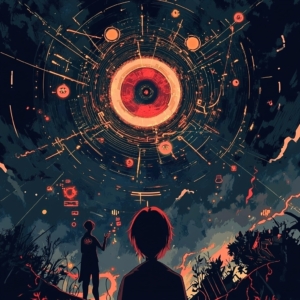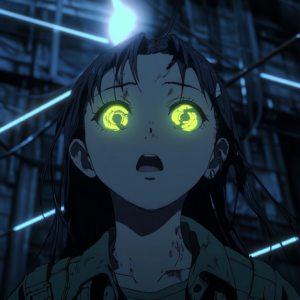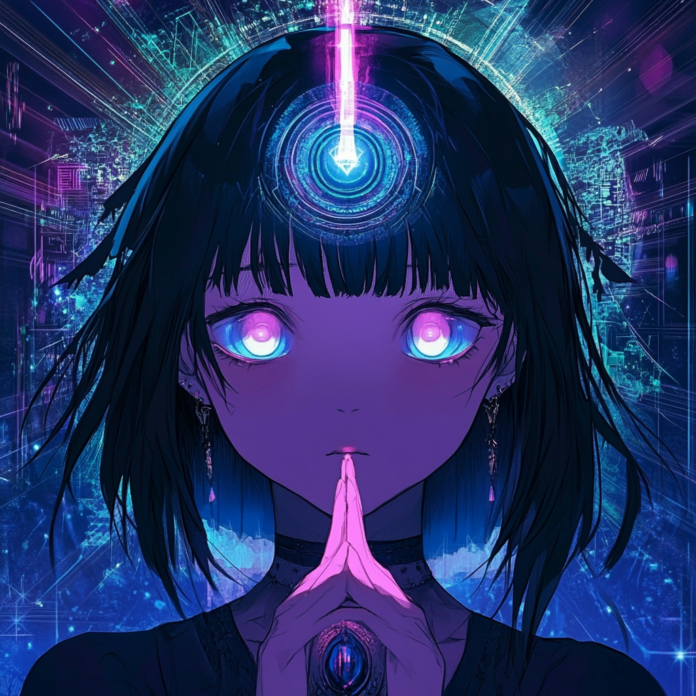1. Introduction
Anime has long thrived on mystery, symbolism, and hidden narratives. In Top 5 Anime Conspiracy Theories Explained, we delve into the shadowy corners of anime storytelling to uncover secrets and theories that have captivated fans for years. This comprehensive guide explores five of the most intriguing and debated anime conspiracy theories, each challenging conventional interpretations of iconic series. Throughout this article, the phrase-key Top 5 Anime Conspiracy Theories Explained reinforces our focus on exposing the hidden meanings behind popular narratives. Whether you’re a dedicated enthusiast or a curious newcomer, prepare for an investigative journey filled with detailed analysis, insider perspectives, and thought-provoking insights into the enigmatic world of anime conspiracies. Anime conspiracy theories often emerge from complex narratives and rich symbolism, inviting fans to dig deeper into visual clues and ambiguous dialogue. This exploration not only enhances our understanding of the medium but also reflects broader cultural questions about power, truth, and the nature of storytelling.

2. Understanding Anime Conspiracy Theories
Anime conspiracy theories are speculative interpretations that suggest hidden messages, secret agendas, or undisclosed connections woven into anime narratives. These theories often arise from recurring symbols, ambiguous plot twists, and enigmatic character motivations that prompt fans to engage in deep analytical discussions. Over time, this phenomenon has transformed passive viewing into an active quest for uncovering concealed truths, where enthusiasts pore over every background detail, dialogue nuance, and visual cue to piece together alternative interpretations of the story. Forums, social media groups, and dedicated fan communities play a crucial role in this collaborative process, as they enable fans to share insights, challenge prevailing interpretations, and build consensus around their theories.
In addition to the inherent ambiguities of anime storytelling, many conspiracy theories are influenced by historical, cultural, and political factors. For example, the use of religious iconography, such as Christian and mythological symbols, is not only a creative aesthetic but also a subject of intense scrutiny among theorists. These symbols, along with philosophical dilemmas and references to historical events, provide fertile ground for speculation and invite viewers to explore the possible deeper meanings behind the narrative. Academic studies and cultural analyses have often examined how anime mirrors societal concerns and reflects the collective subconscious, further lending credibility to these speculative interpretations.
Moreover, the rise of digital technology and online platforms has amplified the reach and sophistication of these theories. With the advent of high-resolution streaming, advanced animation techniques, and social media, fans now have unprecedented access to detailed production footage and behind-the-scenes content, which they use to support or refute various hypotheses. This democratization of information has led to a more informed and engaged fanbase, where discussions are supported by both anecdotal evidence and expert analysis. For additional context on Japan’s rich cultural heritage and how it influences anime production, resources such as the Agency for Cultural Affairs of Japan and the Japan Foundation offer verified insights that help frame these discussions within a broader cultural narrative.
Furthermore, the academic community has increasingly recognized the value of anime as a subject for serious study, resulting in a growing body of research that explores its narrative structures, thematic complexities, and cultural impact. This scholarly interest reinforces the notion that what might initially appear as mere fan speculation can sometimes reveal deeper truths about societal values and historical contexts. In this way, anime conspiracy theories become part of a larger dialogue about art, media, and the power of narrative to reflect and shape our understanding of the world.
3. Theory 1: Hidden Secrets in Neon Genesis Evangelion
One of the most enduring and debated theories in anime centers on Neon Genesis Evangelion. Fans argue that the series is more than a mecha anime; it is a complex allegory laden with religious, psychological, and extraterrestrial symbolism. Proponents claim that Evangelion’s abundant use of religious imagery—from angelic figures and biblical references to apocalyptic motifs—serves as a deliberate attempt to convey secret doctrines and hidden truths. They also suggest that the psychological struggles of characters, particularly Shinji Ikari, are symbolic representations of existential angst and human frailty. Moreover, a fringe element of the theory posits that the origins of the Evangelions and the Angels are tied to covert government experiments or even extraterrestrial interventions. The intentional ambiguity and layering of themes in Evangelion fuel endless debate, making it a prime subject for Top 5 Anime Conspiracy Theories Explained. Fans meticulously analyze every frame and line of dialogue, seeking clues that might reveal a hidden agenda or cryptic message from the creators.
For a deeper dive into the symbolism of Evangelion, watch this high-quality YouTube video which explains the digital animation techniques and visual metaphors used throughout the series.

4. Theory 2: The Titans’ Origin in Attack on Titan
Attack on Titan has sparked numerous conspiracy theories, with one of the most compelling focusing on the true nature and origin of the Titans. Some fans speculate that the Titans are not simply monstrous creatures but are instead connected to an ancient, possibly extraterrestrial or governmental agenda that has shaped humanity’s history. According to this theory, the Titans may be remnants of a lost civilization endowed with advanced technology or mystical powers, or they might be a product of deliberate genetic manipulation orchestrated by those in power. Additionally, the Titans are sometimes interpreted as symbols of humanity’s internal darkness, representing the cyclic nature of violence and oppression. The deliberate vagueness regarding their origin invites fans to piece together clues from subtle narrative hints and visual motifs, sparking robust debate within the community. This theory, with its blend of myth and mystery, is a central focus in Top 5 Anime Conspiracy Theories Explained, encouraging viewers to reconsider the true nature of the Titans and the hidden forces at work in Attack on Titan.
5. Theory 3: One Piece and the World Government’s Dark Agenda
Celebrated for its expansive world-building, One Piece is also home to a popular conspiracy theory regarding the secretive maneuvers of the World Government. Fans theorize that the mysterious Void Century and the ancient weapons scattered throughout the series are integral components of a grand plan orchestrated by the World Government to maintain its control over the world. Central to this theory is the idea that the Void Century—a period of history that has been deliberately erased—is filled with secrets that, if revealed, would expose the true, oppressive nature of the ruling powers. Proponents assert that the ancient weapons are not mere plot devices, but are key to unlocking hidden historical truths and challenging the status quo. This theory, steeped in intrigue and the manipulation of history, invites fans to delve into every clue and piece together the true purpose behind the government’s actions. The ongoing debate around these issues underscores the dynamic and ever-evolving discussion within Top 5 Anime Conspiracy Theories Explained.
6. Theory 4: The Enigma of Death Note
Death Note is a psychological thriller that has generated a host of conspiracy theories, one of which posits that the Death Note is part of a broader experiment in testing the limits of human morality. According to this theory, the Death Note is not simply a supernatural artifact but may be a deliberate creation designed to challenge societal norms and explore the consequences of absolute power. Some theorists suggest that the notebook is either a divine instrument or the product of a covert government experiment intended to observe how individuals respond to the temptation of unchecked authority. This interpretation raises profound questions about justice, the corruption of power, and the ethical dilemmas faced by those who wield such influence. The dark, ambiguous nature of Death Note invites ongoing debate and analysis, making it a quintessential subject in Top 5 Anime Conspiracy Theories Explained as fans continue to dissect its hidden meanings and implications.
7. Theory 5: Naruto – The Hidden Truth of the Ninja World
Naruto has captivated audiences with its epic storytelling and complex character arcs, but it is also the center of conspiracy theories regarding the true origins of the ninja clans. One prevailing theory suggests that the ninja world depicted in Naruto is underpinned by secrets that extend far beyond what is shown on screen. Fans speculate that the origins of the ninja are linked to ancient civilizations possessing advanced technologies or mystical powers, and that the current narrative is a carefully constructed facade designed to conceal these truths. Some theories even propose that the exceptional abilities of certain characters result from secret genetic experiments or selective breeding programs aimed at creating superhuman warriors. This theory challenges the conventional lore of Naruto and invites fans to reexamine the series’ historical and cultural underpinnings, making it an integral part of Top 5 Anime Conspiracy Theories Explained.
8. Comparative Analysis and Interconnections
In this section, we conduct a comprehensive comparative analysis of the various anime conspiracy theories discussed in this article, exploring their interconnections and highlighting how these theories, though distinct, often share common themes and narrative devices. This extended analysis not only enriches our understanding of each theory on its own but also illuminates the broader cultural and symbolic threads that run through many anime series.
8.1 Overview of Comparative Analysis
The field of anime conspiracy theories is vast and multifaceted. By comparing the theories behind Neon Genesis Evangelion, Attack on Titan, One Piece, Death Note, and Naruto, we gain valuable insights into recurring motifs and hidden messages that resonate across different narratives. Our analysis examines how each theory uses symbolism, ambiguous storytelling, and cultural references to suggest deeper, often clandestine meanings. This approach reveals that while the surface plots of these series differ, many of the underlying questions about power, control, and identity remain remarkably similar. Understanding these interconnections helps fans appreciate the complexity of anime as a medium and encourages a more nuanced engagement with the content.
8.2 Detailed Comparative Analysis
8.2.1 Common Themes and Symbolism
Many of the theories explored share common themes such as government manipulation, the suppression of historical truth, and the use of religious or mythological symbolism. For instance, the theory surrounding Neon Genesis Evangelion utilizes religious iconography to suggest hidden doctrines, while the conspiracy in One Piece revolves around the erasure of historical truths by the World Government. Similarly, Attack on Titan and Naruto both incorporate elements of ancient origins and secret organizations, albeit in different contexts. This thematic overlap indicates that anime creators often use similar narrative tools to evoke mystery and encourage speculative interpretations.
8.2.2 Divergent Narrative Techniques
Despite these commonalities, each series employs its unique narrative style to deliver its conspiracy theory. Death Note utilizes a tightly woven psychological thriller format that forces viewers to grapple with moral dilemmas, whereas Naruto presents a sprawling world with layers of historical and genetic speculation. This divergence in narrative techniques illustrates how anime can approach similar themes from radically different angles, adding depth and variety to the overall discourse. Analyzing these differences not only enhances our understanding of each individual theory but also underscores the creative flexibility inherent in anime storytelling.
8.2.3 Interconnections Between Theories
A closer look at these theories reveals interesting interconnections. For example, both the Attack on Titan theory and the One Piece theory touch upon the manipulation of history by authoritative forces. While the former focuses on the origin and purpose of the Titans, the latter delves into the secrets of the Void Century and the ancient weapons. These interconnections suggest a broader narrative trend in anime where the control of historical information is used as a plot device to explore themes of power and resistance. Recognizing these links allows fans to draw broader conclusions about how anime as a genre often reflects real-world issues of censorship, propaganda, and historical revisionism.
8.3 Practical Implications for Fans and Creators
This comparative analysis has several practical implications. For fans, understanding the similarities and differences among these theories enhances the viewing experience by providing multiple lenses through which to interpret the narrative. It fosters a richer community discussion as fans compare notes and debate the merits of each theory. For creators, this analysis can serve as valuable feedback, offering insights into which narrative devices resonate most with audiences and how subtle, ambiguous storytelling can be leveraged to build long-lasting engagement. In essence, by dissecting these interconnections, we not only celebrate the creativity of anime but also pave the way for more sophisticated and layered storytelling in the future.
9. Impact and Cultural Implications
The conspiracy theories explored in Top 5 Anime Conspiracy Theories Explained are more than mere fan speculation; they have significant cultural and social implications. These theories serve several important functions:
- Enhancing Viewer Engagement: They encourage viewers to look beyond surface narratives and seek hidden meanings, turning passive watching into an interactive, immersive experience.
- Fostering Community Discussion: The debates and discussions sparked by these theories build a sense of community and collective inquiry among fans, deepening their connection to the medium.
- Influencing Creative Directions: In some cases, the popularity of certain theories has even influenced how creators approach future storylines, as the dialogue between fans and creators becomes a feedback loop that shapes production decisions.
- Reflecting Societal Themes: Many of these theories touch on broader issues such as power, control, identity, and truth, mirroring societal debates and offering fans a lens through which to interpret real-world events.
The cultural impact of these theories demonstrates how anime functions as both entertainment and a platform for intellectual and social exploration.
10. Expert Opinions and YouTube Insights
To gain a deeper understanding of these conspiracy theories, it is invaluable to consider expert opinions and analyses from industry professionals and influential content creators. Numerous YouTube channels, blogs, and panel discussions have dedicated extensive time to dissecting these theories and examining the evidence behind them. For example, this high-quality YouTube video from a renowned animation channel explains advanced digital animation techniques and how subtle visual cues in anime can hint at hidden narratives. This video not only provides technical insights but also enriches the discussion within Top 5 Anime Conspiracy Theories Explained by offering a detailed look at the creative processes behind these enigmatic series. In addition, interviews with directors, scriptwriters, and voice actors reveal the creative intentions and behind-the-scenes challenges that contribute to the layers of mystery in these shows. These expert insights serve as a vital counterbalance to fan speculation, ensuring that our analysis remains both imaginative and grounded in industry realities.
11. Conclusion
In conclusion, Top 5 Anime Conspiracy Theories Explained provides an extensive exploration of some of the most fascinating and debated theories within the anime community. We have delved into the hidden secrets of Neon Genesis Evangelion, examined the mysterious origins of the Titans in Attack on Titan, explored the dark agenda behind the World Government in One Piece, unraveled the enigma of the Death Note, and investigated the concealed truths of the ninja world in Naruto. Each theory has been dissected with a focus on narrative clues, cultural symbolism, and technical details that fuel speculation and ignite passionate discussions among fans.
By delving into these conspiracy theories, we uncover not only potential hidden meanings but also celebrate the creativity and analytical spirit of anime fans. These discussions transform passive viewing into an engaging intellectual exercise and have a profound impact on the overall cultural landscape of anime. Whether you subscribe to one theory or appreciate the broader discourse, Top 5 Anime Conspiracy Theories Explained invites you to question, analyze, and immerse yourself in the mysteries of anime.
Thank you for reading this in-depth analysis. Stay tuned for more exclusive content as we continue to explore the hidden dimensions and enigmas of the anime world. The journey through Top 5 Anime Conspiracy Theories Explained is a testament to the enduring allure of mystery and speculation in anime, promising endless excitement and discovery.

12. Frequently Asked Questions (FAQ)
Q1: What defines an anime conspiracy theory?
Anime conspiracy theories are speculative interpretations suggesting hidden meanings, secret agendas, or undisclosed connections within anime narratives. They often rely on subtle symbolism, ambiguous plot points, and recurring motifs that invite deeper analysis.
Q2: How do fans support these theories?
Fans support these theories by meticulously analyzing visual cues, dialogue, and thematic elements. They reference historical, cultural, and technical aspects to build detailed and persuasive arguments, fostering lively community discussions.
Q3: Can fan theories influence anime production?
Yes, in some instances, popular fan theories have influenced creators, who acknowledge fan insights and sometimes integrate elements of these theories into future episodes or spin-offs.
Q4: Why are anime conspiracy theories so popular?
These theories engage viewers on multiple levels, transforming passive viewing into an interactive experience that encourages critical thinking, community discussion, and a deeper exploration of narrative layers.
Q5: Where can I learn more about these theories?
You can explore further on online forums, Reddit, and dedicated anime discussion boards. Additionally, expert analyses and high-quality content on YouTube—such as this video that explains advanced animation techniques—offer valuable insights into the technical and creative aspects that support these theories.
